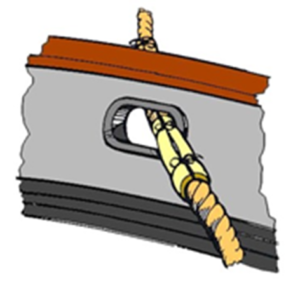Protecting from Chafe
Protecting from Chafe
All lines must be protected from chafing. Wherever possible lines should be routed to avoid rubbing contact with hard objects, especially hard, sharp-edged objects and most especially hard, sharp-edged and rough-surfaced objects. A good example of the worst situation is rubbing a dock line over the raw edge of a concrete pier. If this situation is unavoidable, then effective chafing gear must be used to protect the line. Chafing gear will wear through also, so it must be checked regularly and replaced when necessary. Chafing gear in storms can trap heat and lead to failure. Make sure chafing gear is well ventilated.

